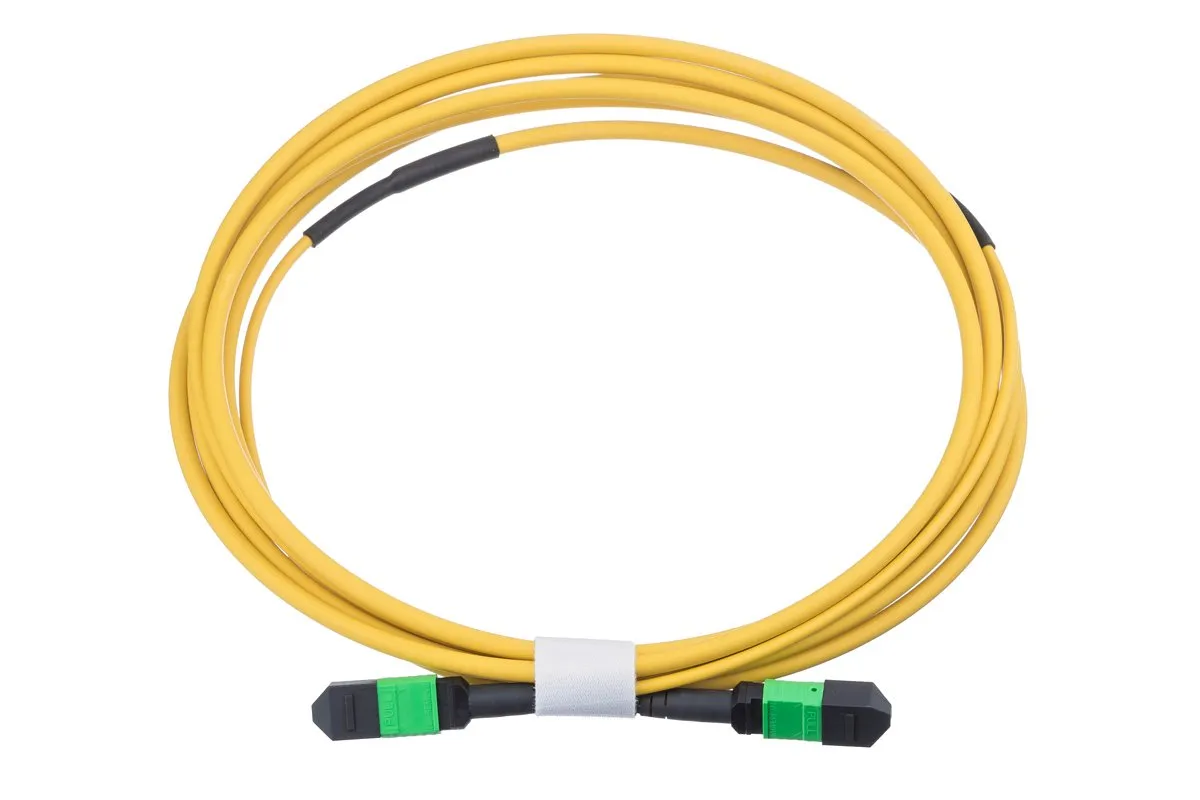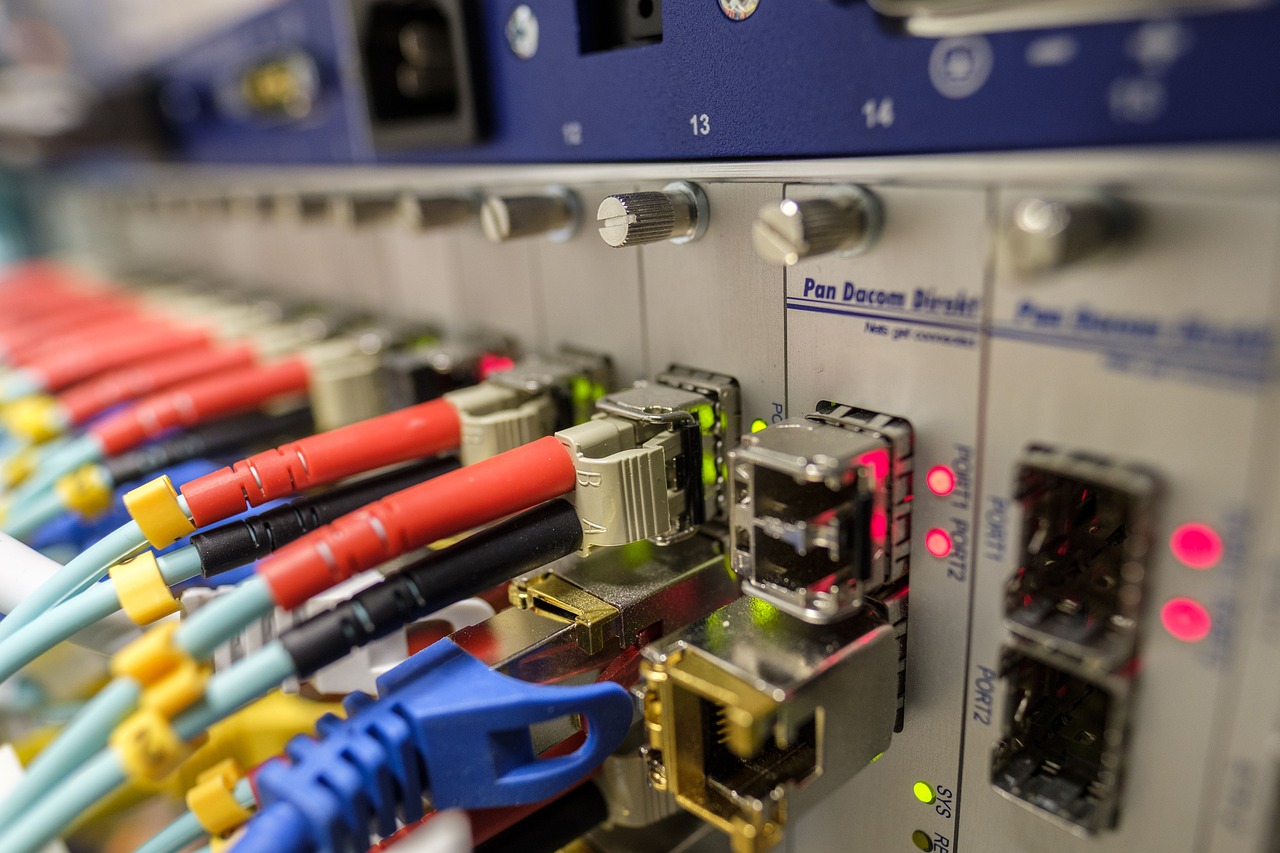The Advantages of MPO Fiber Optic Trunk Cables in Data Centers

Understanding MPO Fiber Optic Trunk Cables
MPO Fiber Optic Trunk Cables are a crucial component of modern data centers, providing high-density connectivity and enhanced performance for efficient data transmission.
What Are MPO Fiber Optic Trunk Cables?
Definition and Basic Function
MPO Fiber Optic Trunk Cables are multi-fiber cables with MPO connectors on both ends, designed to facilitate quick and reliable connections for transmitting high volumes of data. These cables are commonly used to create links between networking equipment, such as switches, routers, and servers.
Importance in Modern Data Centers
In today's data-driven world, MPO Fiber Optic Trunk Cables play a vital role in ensuring seamless communication within data centers. Their ability to handle large bandwidths and support high-speed networks makes them indispensable for maintaining the efficiency and reliability of data center operations.
Components of MPO Fiber Optic Trunk Cables
Connectors and Fiber Counts
MPO Fiber Optic Trunk Cables feature MPO connectors that can accommodate a high number of fibers, typically ranging from 8 to 144 fibers. This high fiber count allows for the consolidation of multiple connections into a single cable, reducing clutter and optimizing space utilization within data center environments.
Cable Types and Structures
These cables come in various types, including single-mode (SM) and multimode (MM), each with distinct transmission characteristics. Additionally, they may be structured as either standard trunk cables or breakout cables, offering flexibility in meeting different connectivity requirements within the data center infrastructure.
The Keyed Characteristics of MPO Fiber Optic Cables
MPO Fiber Optic Trunk Cables exhibit key characteristics that make them essential for modern data centers, offering high-density connectivity and enhanced performance for seamless data transmission.
High-Density Connectivity
Space Efficiency in Data Centers
The MPO Fiber Optic Trunk Cables provide exceptional space efficiency within data centers due to their ability to consolidate multiple fibers into a single cable. This consolidation reduces the physical footprint of the cabling infrastructure, allowing for optimized space utilization and streamlined cable management. As data centers continue to evolve and expand, the efficient use of space becomes increasingly crucial, making MPO Fiber Optic Trunk Cables an ideal choice for maintaining a well-organized and clutter-free environment.
Scalability for Future Expansion
One of the key advantages of MPO Fiber Optic Trunk Cables is their scalability to accommodate future expansion needs within data centers. As data demands grow, these cables offer the flexibility to scale up without significant overhauls to the existing infrastructure. This scalability ensures that data centers can adapt to increasing connectivity requirements seamlessly, providing a future-proof solution for evolving technological landscapes.
Enhanced Performance
Speed and Bandwidth Capabilities
MPO Fiber Optic Trunk Cables are designed to deliver exceptional speed and bandwidth capabilities, meeting the high-performance demands of modern data center environments. With support for high-speed networks and applications, these cables enable rapid data transmission, ensuring minimal latency and optimal network responsiveness. The robust performance attributes of MPO Fiber Optic Trunk Cables contribute to the overall efficiency and reliability of data center operations.
Reliability and Durability
Reliability is paramount in data center operations, and MPO Fiber Optic Trunk Cables excel in providing consistent and dependable connectivity. Their durable construction and advanced fiber optic technology ensure minimal signal loss and maximum uptime, even in demanding operational conditions. By offering reliable connections for critical networking equipment, these cables play a vital role in maintaining uninterrupted data flow within the data center infrastructure.
The Role of SM and OS2 in Data Centers
In the realm of data centers, the utilization of SM (Single-Mode) and OS2 cables is instrumental in ensuring seamless and efficient long-distance data transmission, each offering distinct advantages for diverse networking requirements.
Understanding SM (Single-Mode) Cables
Benefits for Long-Distance Transmission
SM (Single-Mode) cables are designed to facilitate the transmission of data over extended distances with minimal signal loss. Their ability to carry signals over long distances makes them an ideal choice for interconnecting data center facilities or establishing connections between geographically dispersed networking equipment. By leveraging the inherent properties of single-mode fiber, these cables ensure that data can be transmitted reliably across vast distances, supporting the seamless operation of interconnected data center infrastructures.
Use Cases in Data Centers
The deployment of SM (Single-Mode) cables within data centers is particularly prevalent in scenarios where long-distance connectivity is essential. For instance, they are commonly employed in linking data centers located in different geographical regions, enabling high-speed and low-latency communication between these facilities. Additionally, SM (Single-Mode) cables are utilized for establishing connections to remote networking equipment or extending network reach to satellite offices, contributing to the establishment of a robust and interconnected data center ecosystem.
The Advantages of OS2 Cables
Ultra-Low Loss Characteristics
OS2 cables are renowned for their ultra-low loss characteristics, ensuring minimal attenuation during data transmission. This attribute enables them to maintain signal integrity over extended distances, making them well-suited for applications requiring high levels of precision and reliability. The ultra-low loss properties of OS2 cables contribute to the efficient transfer of critical data within the data center environment, supporting uninterrupted operations and seamless communication between networked devices.
Compatibility with High-Speed Networks
In the context of modern data centers, OS2 cables offer exceptional compatibility with high-speed networks, including those utilizing advanced technologies such as 5G and beyond. Their ability to seamlessly integrate with high-speed networking infrastructures positions them as a foundational component for facilitating rapid and reliable data transfer within next-generation data center environments. By providing robust support for high-speed network architectures, OS2 cables play a pivotal role in enabling the efficient exchange of large volumes of mission-critical data across interconnected systems.
The Advantages of Using MPO Fiber Optic Trunk Cables
MPO Fiber Optic Trunk Cables offer significant advantages in data center environments, contributing to efficient cable management and future-proofing data centers for evolving technology needs.
Efficient Cable Management
Efficient cable management is a critical aspect of maintaining a well-organized and streamlined data center infrastructure. MPO Fiber Optic Trunk Cables play a pivotal role in achieving efficient cable management through their unique characteristics and design.
Reducing Physical Space Requirements
The utilization of MPO Fiber Optic Trunk Cables significantly reduces the physical space requirements within data centers. By consolidating multiple fibers into a single cable, these trunk cables minimize the need for extensive cabling pathways and racks, leading to a more compact and space-efficient infrastructure. This reduction in physical space requirements not only optimizes the utilization of available space but also enhances the overall accessibility for maintenance and upgrades within the data center environment.
Simplifying Installation and Maintenance
MPO Fiber Optic Trunk Cables simplify the installation and maintenance processes within data centers. Their high-density connectivity allows for quicker deployment, reducing the time and effort required for intricate cabling setups. Additionally, during maintenance activities or system upgrades, the streamlined nature of these trunk cables facilitates easier access to individual connections, minimizing disruption and downtime. This simplification of installation and maintenance procedures contributes to overall operational efficiency and cost-effectiveness in managing data center infrastructures.
Future-Proofing Data Centers
Future-proofing data centers is essential to ensure seamless adaptation to evolving technology needs and increasing demands for high-speed data transmission.
Supporting High-Speed Data Transmission
The adoption of MPO Fiber Optic Trunk Cables supports high-speed data transmission requirements within modern data centers. As technology continues to advance, the need for rapid and reliable data transfer becomes increasingly crucial. These trunk cables are designed to meet such demands by providing robust support for high-speed networks, ensuring that data can be transmitted swiftly and efficiently across interconnected systems. By supporting high-speed data transmission, MPO Fiber Optic Trunk Cables position data centers to seamlessly integrate with emerging technologies while maintaining optimal performance levels.
Adapting to Evolving Technology Needs
Data centers are dynamic environments that constantly evolve to accommodate changing technology needs. MPO Fiber Optic Trunk Cables offer the flexibility needed to adapt to these evolving requirements without necessitating extensive overhauls or infrastructure modifications. Their scalability and compatibility with advanced networking technologies make them an ideal choice for future-proofing data centers against technological obsolescence. By embracing MPO Fiber Optic Trunk Cables, data center managers can ensure that their infrastructure remains adaptable and responsive to emerging technological trends.
Summary
Recap of MPO Fiber Optic Trunk Cable Benefits
As data centers continue to evolve and expand, the adoption of MPO Fiber Optic Trunk Cables brings forth a multitude of benefits that are instrumental in ensuring efficient and reliable data transmission. The key advantages of these cables encompass high-density connectivity, enhanced performance, and future-proofing capabilities, making them indispensable components within modern data center infrastructures.
Key Takeaways for Data Center Managers
Efficiency: MPO Fiber Optic Trunk Cables offer unparalleled efficiency in space utilization, cable management, and installation processes. Their high-density connectivity allows for the consolidation of multiple fibers into a single cable, reducing clutter and optimizing physical space within data centers.
Reliability: With their robust performance attributes and durable construction, MPO Fiber Optic Trunk Cables provide consistent and dependable connectivity for critical networking equipment. This reliability ensures minimal signal loss and maximum uptime, contributing to the seamless operation of data center infrastructure.
Scalability: The scalability of MPO Fiber Optic Trunk Cables enables data centers to adapt seamlessly to increasing connectivity requirements without significant overhauls to the existing infrastructure. This scalability offers a future-proof solution for evolving technological landscapes and ensures long-term viability.
Encouraging Adoption in Data Centers
The widespread adoption of MPO Fiber Optic Trunk Cables is pivotal in driving the advancement of data center technologies. By embracing these cables, data center managers can foster an environment characterized by streamlined operations, optimized space utilization, and readiness for future technological advancements. The encouragement of adoption also paves the way for enhanced network performance, reliability, and adaptability within data center infrastructures.
In conclusion, the integration of MPO Fiber Optic Trunk Cables stands as a strategic imperative for data center managers seeking to elevate the efficiency, reliability, and scalability of their infrastructure while preparing for the demands of tomorrow's technology landscape.
See Also
Maximizing High Density Data Center Infrastructure with 24FO and MPO Cassette Integration
The Advantages of Optical Cable in FTTR for Visible Fiber to the Room Setup
Understanding the Contrasts Between MTP and LC/UPC Optical Cables for 100G Cabling


